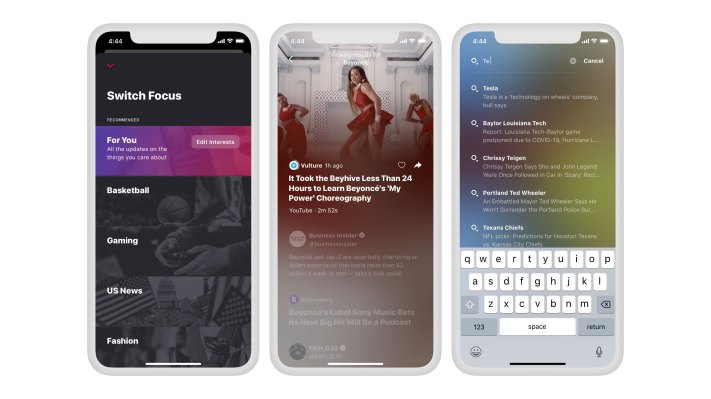River, the latest venture from Wander founder Jeremy Fisher, has today announced the close of a $10.4 million funding round from Founders Fund, .406, BoxGroup, Raised in Space, Josh Kushner and Scooter Braun.
River is meant to rethink the way we consume content across the internet. The app pulls stories and content from across the entire internet, including from publishers, Twitter and other social media, etc. and organizes that content based on the topic.
For example, the confirmation hearings for Hon. Amy Coney Barrett were in my River feed this morning, with stories from a wide variety of publishers. River clips the story down to a headline, but gives users the ability to click through to the full text of the story. The app also prioritizes video content, giving users a chance to get more context on the story without clicking through at all.
What’s most interesting about River, however, is that there is no user account or profile, and no following. That means that the behavior of an individual user (or a phone, as Fisher calls it) will be the only influence on the content they’re served, rather than their social graph playing a role. According to PEW, 55% of U.S. adults get their news either “often” or “sometimes” from social media. The combination of the social graph with information consumption can cause echo chambers and social media has been a place where misinformation can proliferate quickly.
River serves up content from publishers and across the web without using account information, a social graph, or past browsing history, which allows those users to discover a broader range of perspectives. The more users get on the platform, the better it gets at serving them the content that’s relevant to them.
Onboarding to River simply includes ticking boxes for categories that interest you and you’re off to the races.
Rather than understanding everything about the user, River tries to understand everything it can about the content itself.
“We look at things like: who published that content, whether they’re a professional or a regular consumer, whether they are part of an organization that’s a subsidiary of another organization, what placement in that publication do they typically get, how are they connected to other people, what are the topics that are in that tweet or that video or that article,” said Fisher. “We look at how all those things are related to one another.”
Fisher and his co-founders Lev Brie and Leland Maschmeyer had originally planned to launch River before the pandemic struck, with a variety of social sharing features. However, as the pandemic hit and protests in the wake of George Floyd’s murder grew into a global movement, the team realized that both consumption and content sharing were evolving rapidly.
This led the team to rethink the sharing features inside River and ultimately build a standalone, separate app called Overflow.
Overflow allows users to post a selfie video alongside news content out to other social networks. Overflow has an editorially selected feed of content from users, but users can also put their videos on their Instagram Stories or TikTok.
With $10 million+ in funding, River is not currently planning any specific revenue models.
The team is made up of 12 people and Fisher says that a third of the team is “diverse,” but declined to specify the breakdown by gender and/or ethnicity.
Fisher has been building products for nearly 10 years, most notably coming from Wander, which sold to Yahoo back in 2014.
When asked what he learned from Wander that carries into River, he said that it’s about building a product that fits into the gaps of already established user behavior and keeping things as simple as possible.
“Often, you start with a really overdetermined product and an attitude that ‘more is more’,” said Fisher. “What I’ve learned over the years is that a product is the average of its features and not the sum of its features. Incremental things actually detract from the experience. You want every feature to be a ’10’.”
